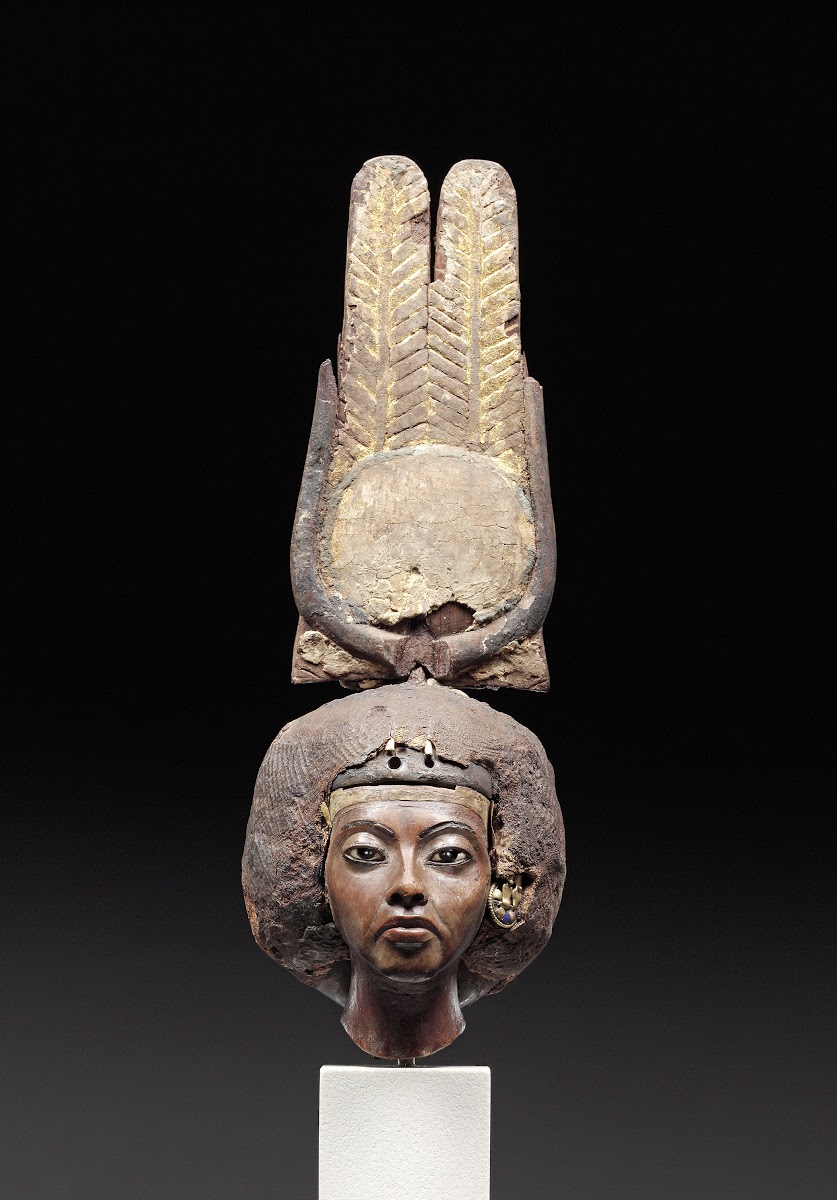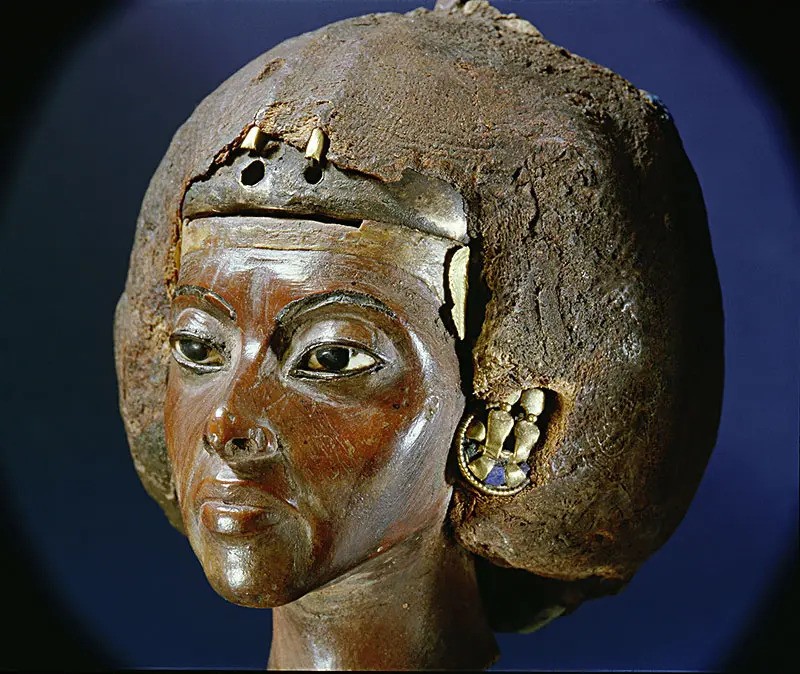The Head of Queen Tiye, one of Ancient Egypt’s most exquisite sculptures, serves as a powerful symbol of the queen’s legacy and influence. Crafted from dark wood and adorned with gold and lapis lazuli inlays, this remarkable piece of art highlights the royal status of Queen Tiye, the Great Royal Wife of Pharaoh Amenhotep III and the mother of the revolutionary pharaoh Akhenaten. Through its refined craftsmanship and the use of precious materials, this sculpture offers a unique glimpse into the wealth, power, and wisdom of one of Egypt’s most influential women.
A Symbol of Royal Power and Wisdom
The queen’s high crown, intricately detailed with both elegance and strength, stands as a testament to her prestigious position within the royal court. The crown, inlaid with gold and lapis lazuli, was often used in royal regalia to symbolize divine authority and wealth, further emphasizing Tiye’s stature. These materials were not only highly prized but were traditionally associated with the gods and royalty in Ancient Egypt. Such opulence is indicative of her vital role in the political and religious spheres of Egyptian society.

Her expression, dignified and serene, captures a sense of wisdom and intelligence. In her eyes, one can sense the authority and respect she commanded. This combination of grace and strength embodied the ideal of a ruler who was not only a consort but an active participant in the governance of the kingdom. Queen Tiye’s portrait is more than just an artistic depiction; it reflects the complex role of women in ancient Egyptian politics.
Queen Tiye’s Political and Religious Influence
Beyond her role as the mother of Akhenaten, Queen Tiye was a political force in her own right. Historical records suggest that Tiye was heavily involved in the administration and diplomatic matters of Egypt, particularly during the later years of Amenhotep III’s reign. As a powerful and influential queen, she played a crucial role in shaping the course of Egypt’s political and religious landscape. It is said that she had a strong hand in directing the affairs of state, even exerting influence over foreign policy and the selection of officials.

Queen Tiye’s influence grew even further through her son Akhenaten’s reign. She may have acted as a mediator between Akhenaten and his critics, as well as a stabilizing force during the initial stages of his religious reforms. Her involvement in these matters illustrates how royal women could influence not just the internal politics of Egypt, but also international relations, particularly with the neighboring powers of the time, such as the Mitanni and Hittites.
A Glimpse into Ancient Egypt’s Political Dynamics
The portrait of Queen Tiye encapsulates the broader role of women in ancient Egypt. While the pharaoh was often depicted as a male ruler, women like Tiye wielded significant power and influence, often navigating complex political and diplomatic situations. This sculpture serves as a reminder of the complexity of Egypt’s political landscape, where the queen consort was sometimes just as involved in governance as the king himself.

Queen Tiye’s reign and legacy reflect a time of transition in Egypt’s history. Her contributions during her husband’s reign and her pivotal role in guiding Akhenaten’s early years illustrate how royal women could help shape the trajectory of the nation. Her influence over Egypt’s religious landscape is particularly significant, as Akhenaten’s religious revolution would later challenge the very foundations of the Egyptian polytheistic system.
Enduring Legacy and Cultural Significance
Today, the Head of Queen Tiye stands as one of the finest examples of ancient Egyptian artistry and craftsmanship. The intricacy and detail of the sculpture, combined with its historical significance, make it an enduring symbol of royal elegance and political power. The piece is not only a representation of Queen Tiye’s physical likeness but also a portrait of her legacy—one that resonates through Egypt’s history as a powerful and influential queen who helped shape the course of the civilization.
This remarkable sculpture continues to captivate scholars, historians, and visitors alike, offering a window into a transformative period in Egyptian history. As one of the most revered royal women of her time, Queen Tiye’s enduring influence is encapsulated in this masterful work of art, which remains a significant artifact of both Egypt’s royal lineage and the broader history of ancient civilizations.

